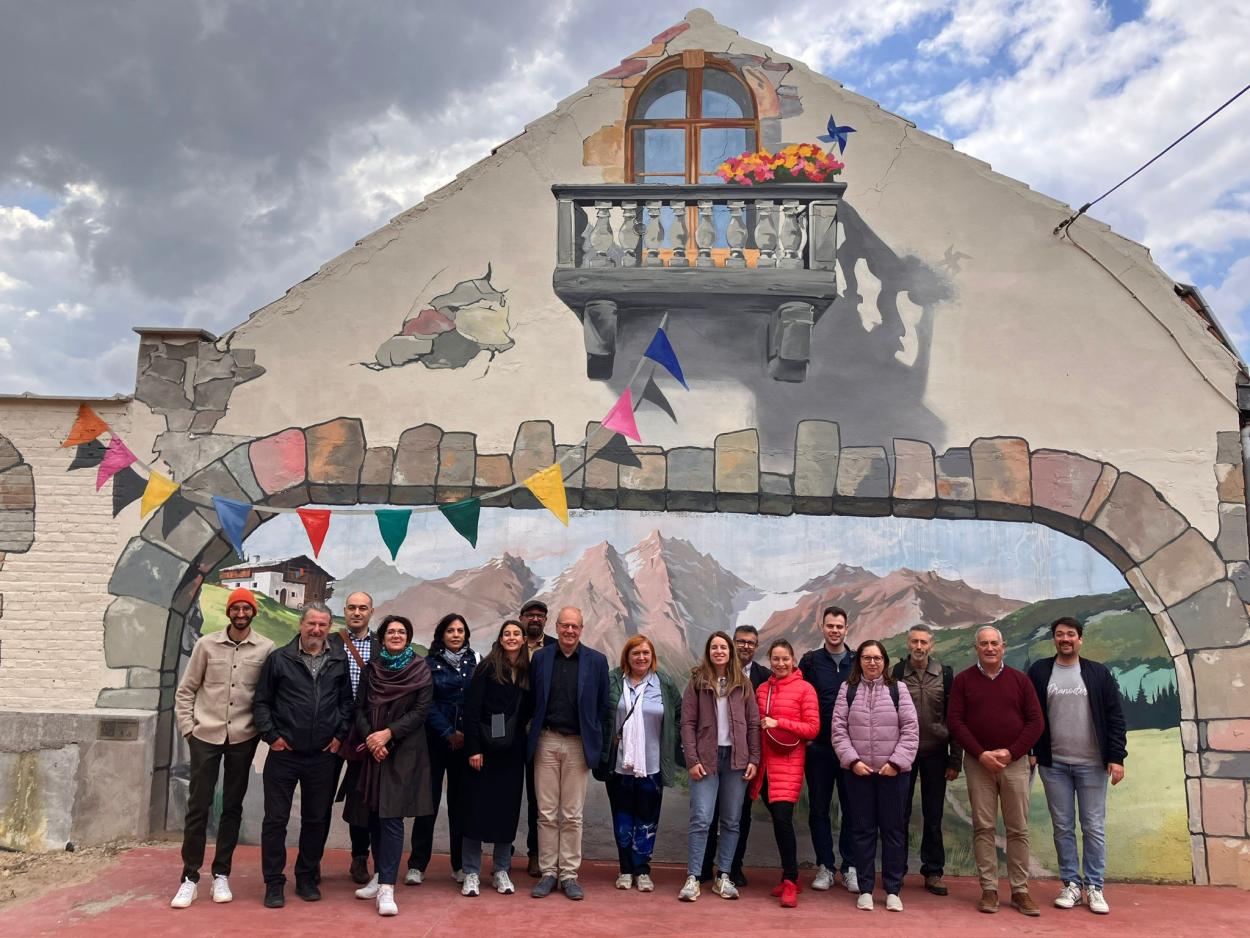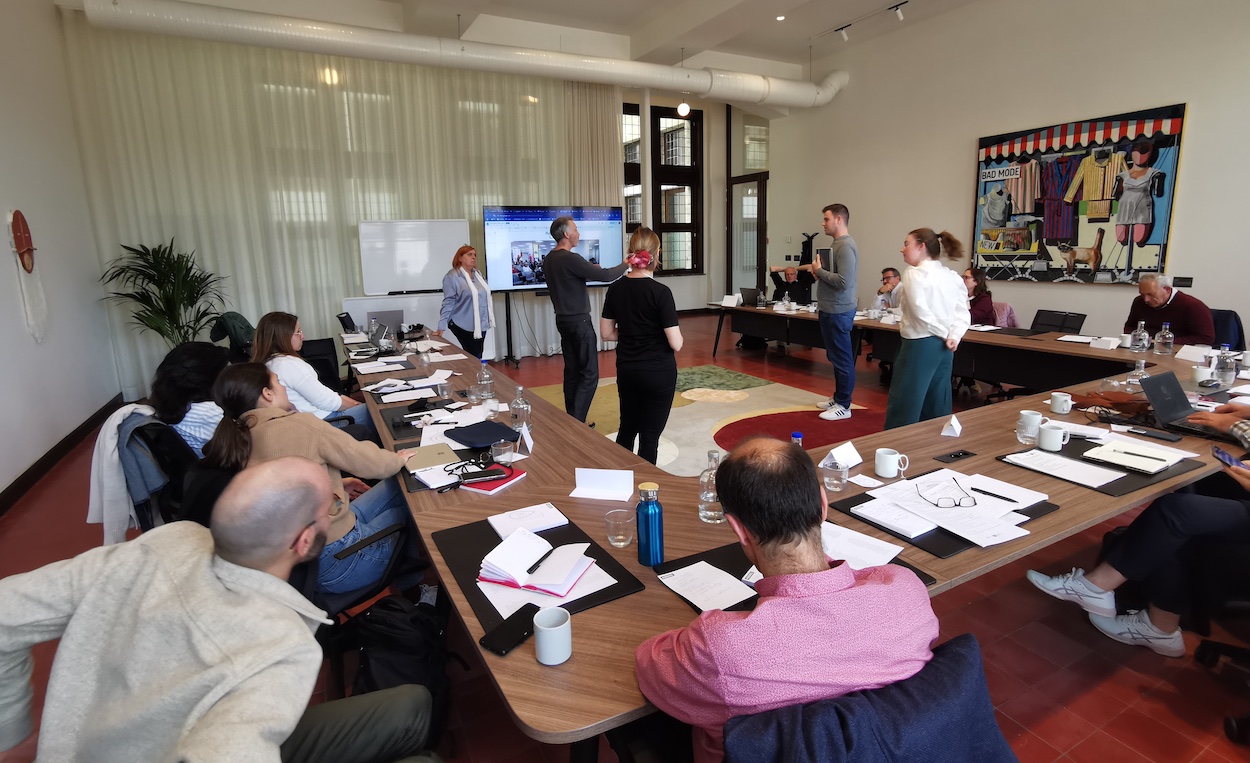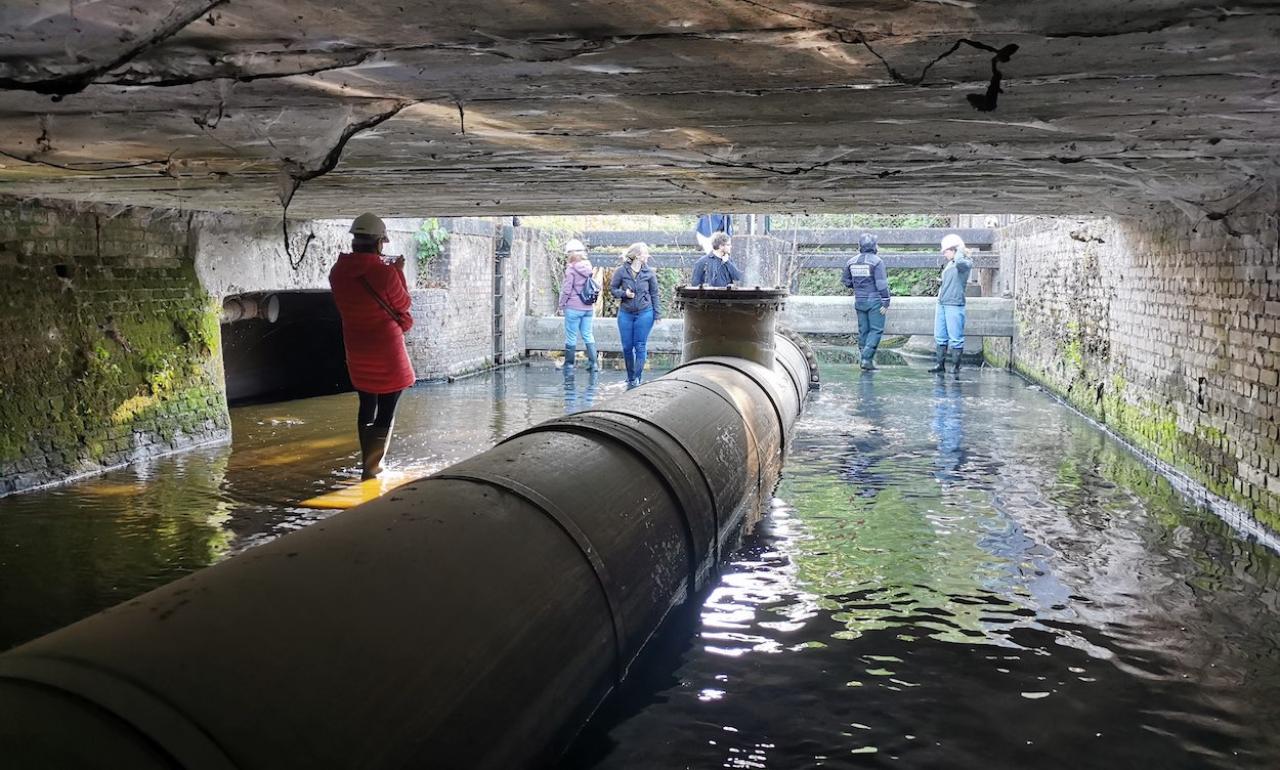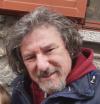On two sunny days (May 8 - 9) in Roeselare, in the north western Flemish province of Belgium, the partner cities and their ULG members were extremely happy to have with us city functionaries, experts and artists that shared with us inspirational examples of citizen participation in urban design, showing how arts and culture can fertilise and be used in such processes.
Below we share some key intakes on practices of citizen engagement among those emerged during our meeting in Roeselare; with the hope to be useful to other cities, urban networks and projects, too.
“Small is more”
We enjoyed a tour at some of the 32 urban interventions in Roeselare that were the result of a citizen-led participatory budgeting process. In this, the city of Roeselare allocated 200.000 euros for projects decided by the citizens and co-implemented by the local community and the city. Those interventions included neighbourhood-level acts to green or clean the city, to lower and make safer car traffic, to remake public abandoned ‘grey grounds’, and even to create a community-run chicken coop.
While the budget was relatively low, the 32 projects were distributed around 25 locations of the -chosen by the city area of Krottegem, engaging wider numbers of citizens and communities. One might argue, that through such distributed small acts, Roeselare’s citizen participation practice managed to leverage not merely more interest but also more social creativity, local knowhow and capacities invested in the projects.

The HHC Network partners in front of one of the 32 'citizens budgeting' projects in the City of Roeselare.
Focus on (building) relations not (just) on results
Another multiplying effect of such distributed small scale spatial interventions has been that the communities partake not merely in their design and materialisation, but also in their maintenance. The citizens take ownership of their marks in the city, and thus the latter act as nodes around which a new social fabric and relationships emerge.
“The main aim of the project(s) has been to enhance the social cohesion and in person relationships in the area while the actual outcome, important as it may be, has been a secondary concern”, told us Matthias Defour, Roeselare’s policy-officer for participation and neighbourhoods.
A challenging tempo (between participation and policy making)
Different time demands among diverse actors involved in a participatory project is always a challenge to reckon with. While policy makers are happy with quick results, proof of effective delivery and management, participatory projects that engage citizens and communities require time in order to deliver and be fruitful. Time that might be considered precious by elected politicians. Bringing in interested actors early on in any participatory process and by integrating it -timewise- in the City’s policy plans, as the case of Roeselare has shown, may be a way to deal with such challenge.
However, when citizen participation regards the design and making of public works (e.g. infrastructure) thigs get complicated. The strict time-sequence between the design phase, the procurement process and the construction work, diminishes the space for changes and interventions. The building of a new non-potable water system in Chalandri is such a telling case. Albeit initial mapping of residents’ demand for this new water service inhabitants took note mainly when public works kicked off, tripling the demand. Eventually the technical requirements of the water network were modified to keep up with the growing demand, but construction time was prolonged and the cost increased significantly.
As public works themselves act often as the most effective information and interest raising mechanism for a community achieving the best combination between participation and construction is a challenge for all the Hydro-Heritage Cities which aim to infrastructural and urban regeneration.
Schools as civic participation incubators
We learned that schools -and the communities around them- played a key role in both Roeselare and Chalandri because they acted as entry points to the local communities.
Engaging school communities (students, educators, parents etc.), either in running ‘citizen science’ projects like those in Roeselare, or in participatory design and cultural projects like the ones in Chalandri, not only promotes awareness about a topic but it also experiments with community-based urban planning and builds new civic relations. In other words, involving school communities may have lasting transformative results for a city.
However, for this to happen, projects engaging schools should be well organized and integrated in the schools’ life/curriculum, and it is better to last for an adequate period of time (e.g. a semester) and not as one-off activity. In this way, there is a probability for nurturing a citizens’ participation method and culture which potentially might become stable practice of city policymaking.

A performative exercise on citizen participatory projects in each of the Hydro-Heritage Cities Network, acted in the Roeselare meeting.
Arts and science as (urban) detectives
Cultural events are well established awareness raising practices, means to attract interest and to facilitate citizen participation. Science-related activities (e.g. citizen science actions), while less common, are also practices to engage citizens in data gathering, mapping etc. contributing to informed urban policy design.
What clearly emerged during Hydro-Heritage Cities’ meeting in Roeselare is the capacity of both participatory cultural and science events to act as ‘detectives’ that unearth and reveal hidden needs, potential and resources within a city.
Some examples discussed include how by documenting local memory through citizens testimonies might inform and impact plans for local hydro-heritage regeneration. Or, how via sensory walks within a city -facilitated by performative arts- one can translate citizens sense-making of the urban space into interactive digital maps and can identify unforeseen problematic spots or potential for urban intervention and change.
Thus, participatory cultural and scientific practices can be instrumental for both citizens and city authorities in (re-)discovering the creative potential of their urban surroundings, hi-stories and sociality.
The “reverse takeover” (of nature over urbanism)
Lastly, an idea that informed the transformation of a parking lot -on a former grey post-industrial ground- in Roeselare into a bio-diverse park and public space, has been an inspiring call: let nature take over urban space as urban space took over nature since the 19th century. An idea that resonates with the Hydro-Heritage Cities’ aims to reveal and embed their water-related heritage into the contemporary urban life, and most importantly, as means to cope with climate change challenges.
We are going to take such wonderful insights and examples back with us to each Hydro-Heritage City trying to integrate them into our ULG and investment plans. In the next Network’s meeting in Serpa we will have the chance to delve more into citizen participation practices, focusing this time on schools and youth on one hand and on practices of institutionalizing citizen participation in urban policy making and resource management on the other.


